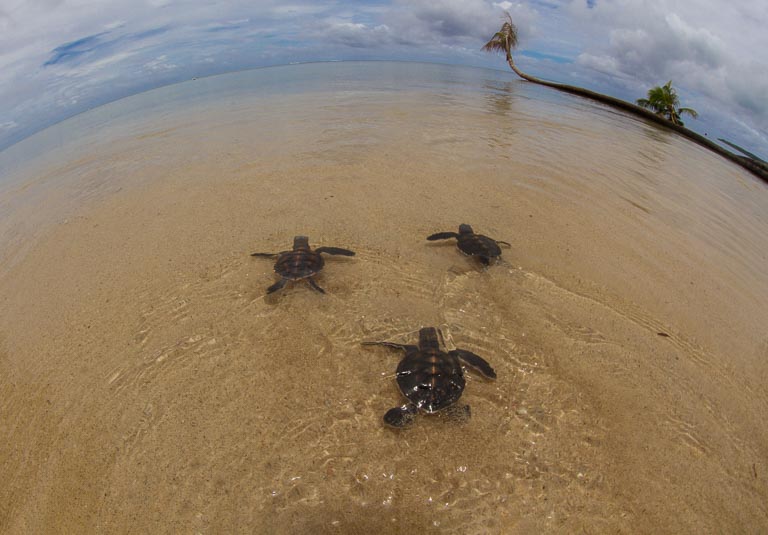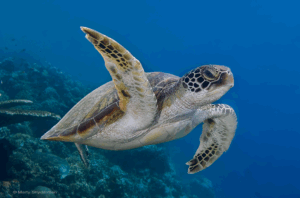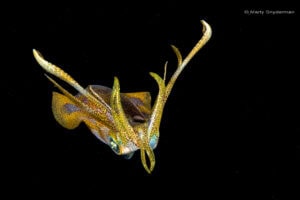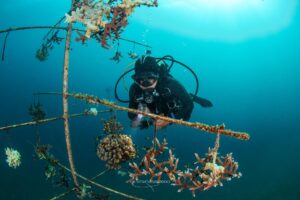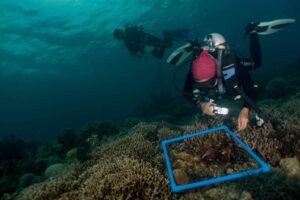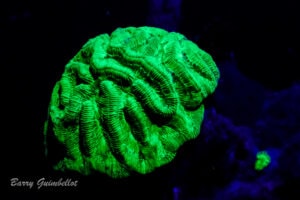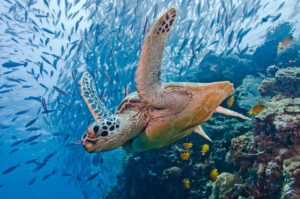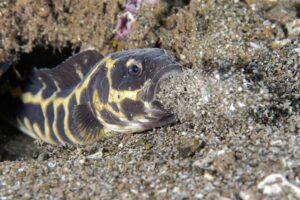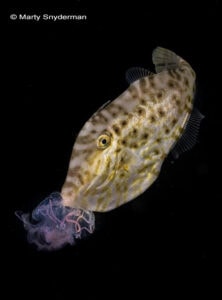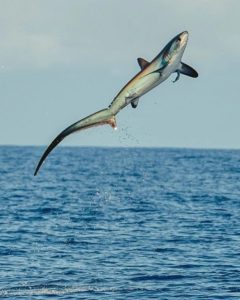Green Seas Turtles: Icons Of The Marine Kingdom
Text and images by Atlantis Photography Ambassador Marty Snyderman
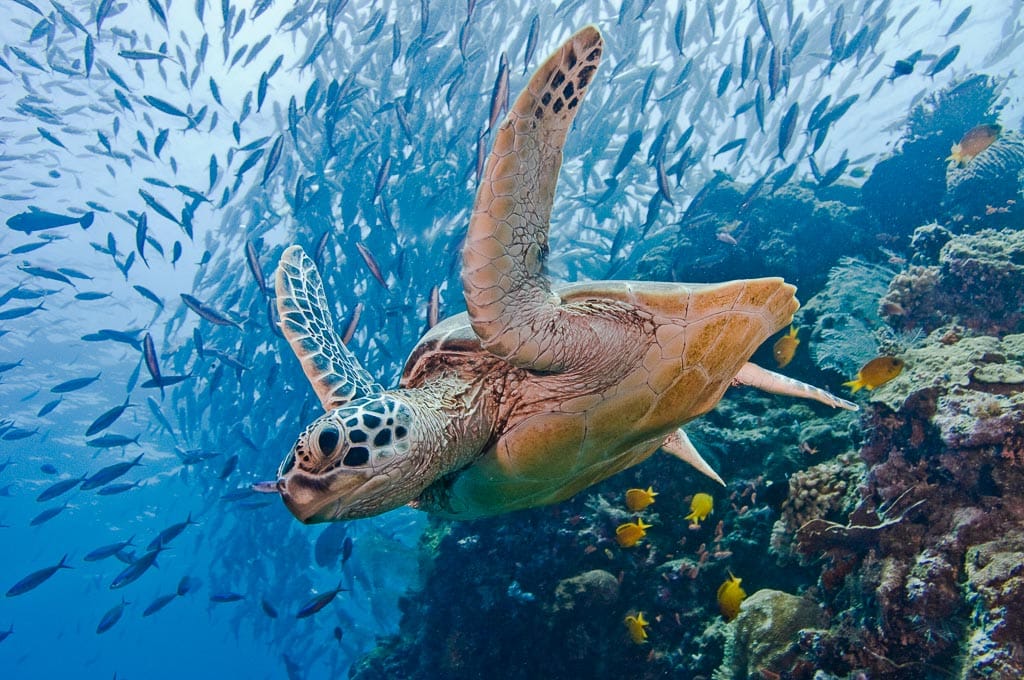
While wildlife aficionados know that every species plays an important role in Mother Nature’s grand plan, some animals have gained an iconic status that elevates these species to a position that makes them symbols of destinations or even the entire animal kingdom. Blue whales, great white sharks, dolphins, seals and sea lions, manta rays and manatees, and even the tiny mandarinfish and pygmy seahorses that are commonly encountered at both Atlantis Puerto Galera and Atlantis Dumaguete have been given this type of recognition. Then there are the slow and steady green sea turtles. Like their terrestrial cousins, they are not the biggest, baddest, swiftest, or most colorful of creatures, but they have a way of pulling on our heartstrings. Cute and adorable in their own way, it is hard to argue that green sea turtles are not among the Marine Kingdom’s iconic species.
Of the world’s eight (some specialists say seven) species of sea turtles, the green sea turtle (Chelonia mydas) is the most often encountered sea turtle in the Philippines. Whether diving from the Atlantis Azores or either of our land-based resorts, it should not come as a huge surprise to find an iconic green sea turtle swimming next to you.
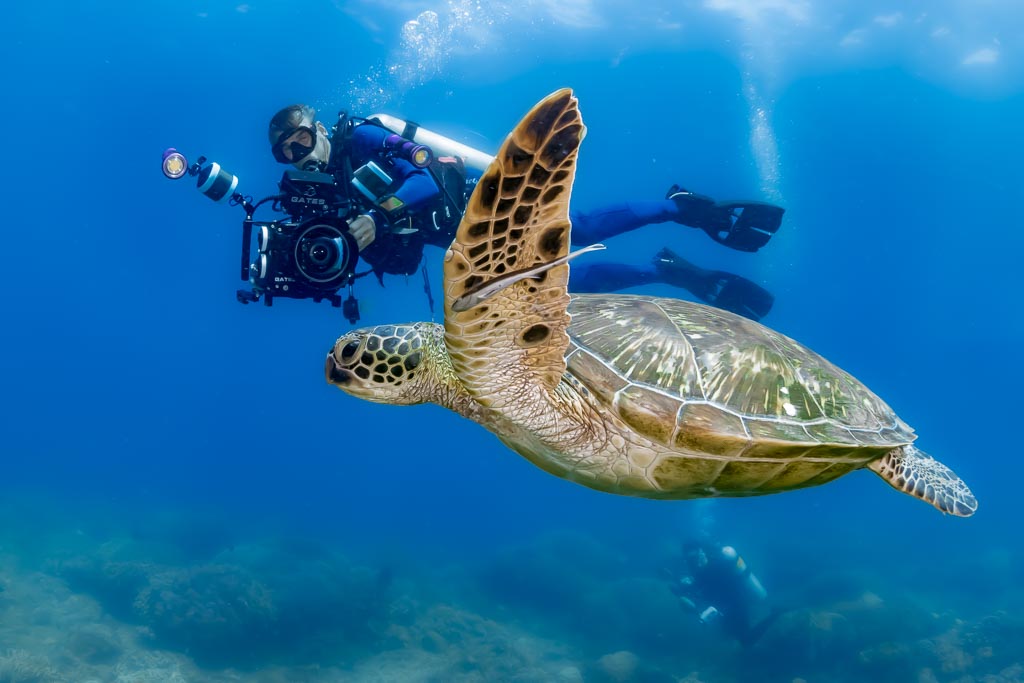
From Whence They Came
Turtles first appeared on earth approximately 200 million years ago. It is generally believed that 50 to 100 million years later, some marsh-dwelling species gradually began to expand their realm by pushing toward the vast expanse of the sea. Modern sea turtles occur throughout temperate and tropical seas, although they show a strong preference for areas with warmer waters.
The Green Sea Turtle
Because of their common name, many first-time observers expect green sea turtles to be green. They are, but not on the outside of their bodies. The common name is derived from the greenish hues of their body fat. The heart-shaped carapace, the shell on the top of the body, usually varies from olive to brown to black.
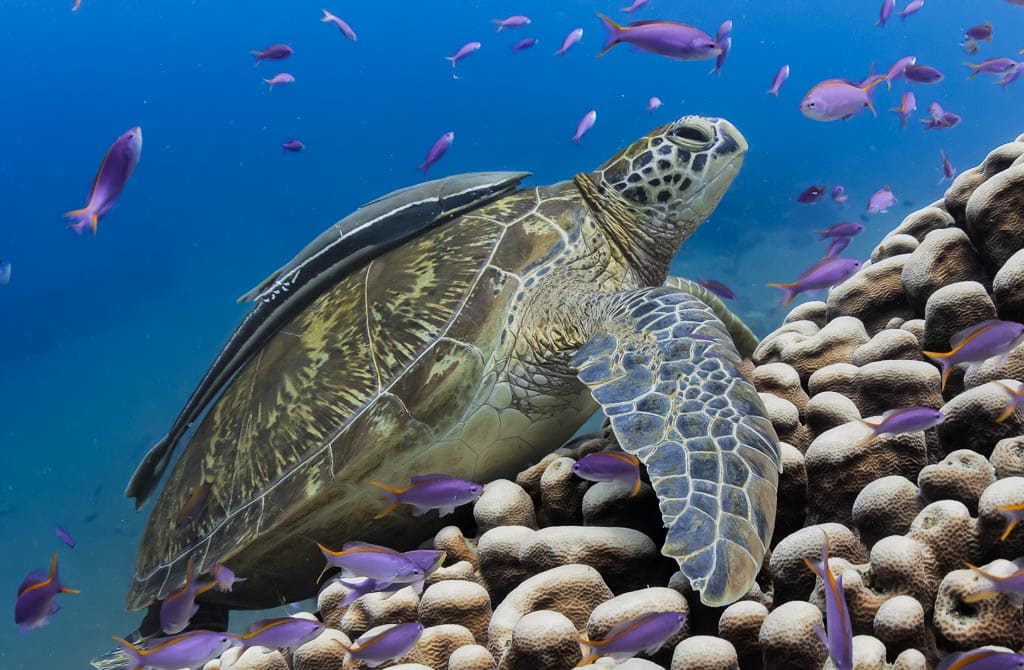
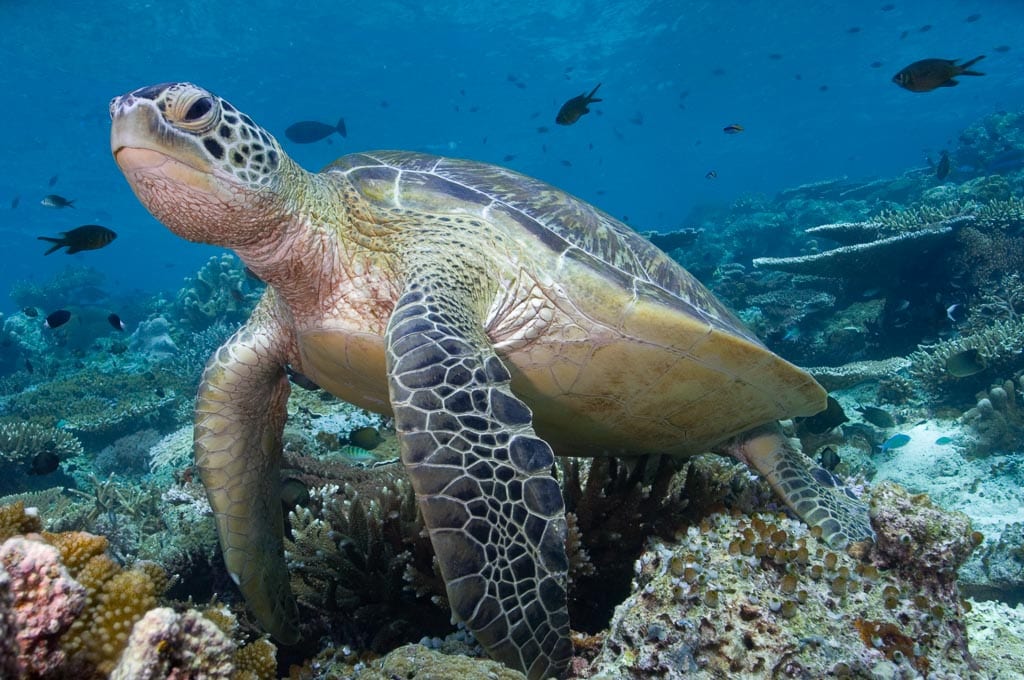
As is the case with other sea turtles, green sea turtles are equipped with paddle-like limbs called flippers that are used primarily to propel the animals through the water in graceful fashion, and much faster when the need arises. Their flippers also enable them to crawl on land, but that is clearly a slow and laborious process.
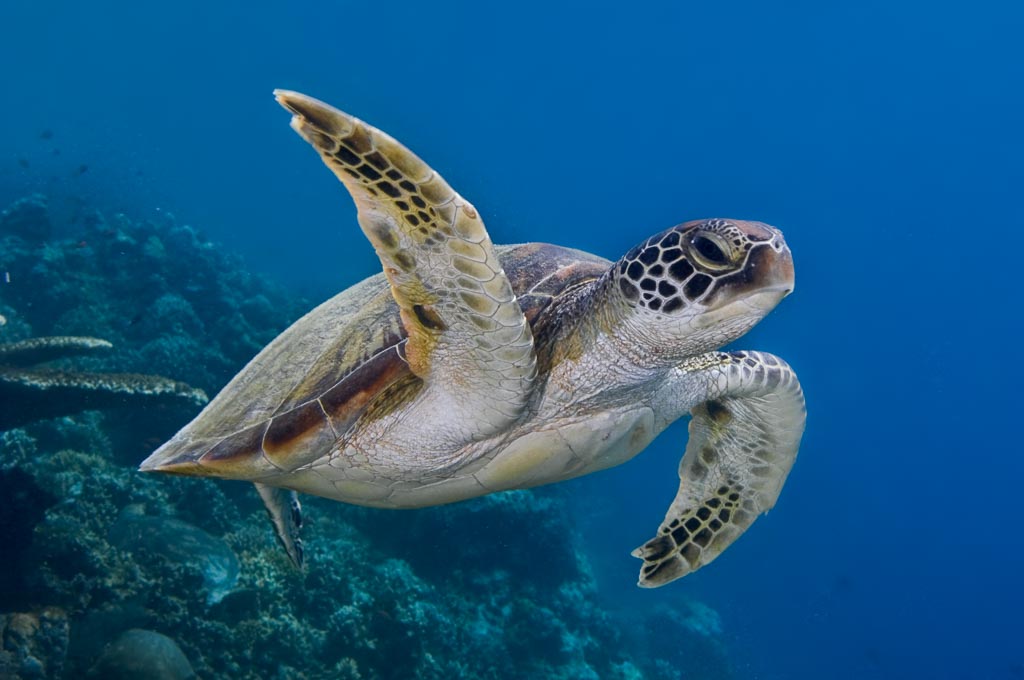
Adult green sea turtles weigh as much as 700 pounds (317.5 kg), thus, they are among the world’s larger sea turtles. Distinguishing between the sexes requires a little practice. Males are generally larger than females, but unless you see green turtles mating, the most practical identification feature is the length of the tail. Extending back beyond the shell, the tails of males are considerably longer than those of the females.
Interestingly, once they enter the sea as hatchlings, male Atlantic green sea turtles (some consider to be a sub-species) are thought to spend the remainder of their lives at sea while male Eastern Pacific green sea turtles (some consider to be a sub-species) are sometimes known to bask in the sun on isolated beaches.
Diet
During the first year or so of their lives, juvenile green sea turtles prey upon various algae and sea grasses as well as jellyfishes, salps, tubeworms, echinoderms, mollusks, crustaceans, cnidarians, and sponges. Adults are primarily herbivorous preying only upon more than 275 species of algae and sea grasses that occur in relatively shallow areas. While sea turtles lack teeth, the powerful horny beak and finely serrated jaws are well designed to help them crop algae and sea grasses.
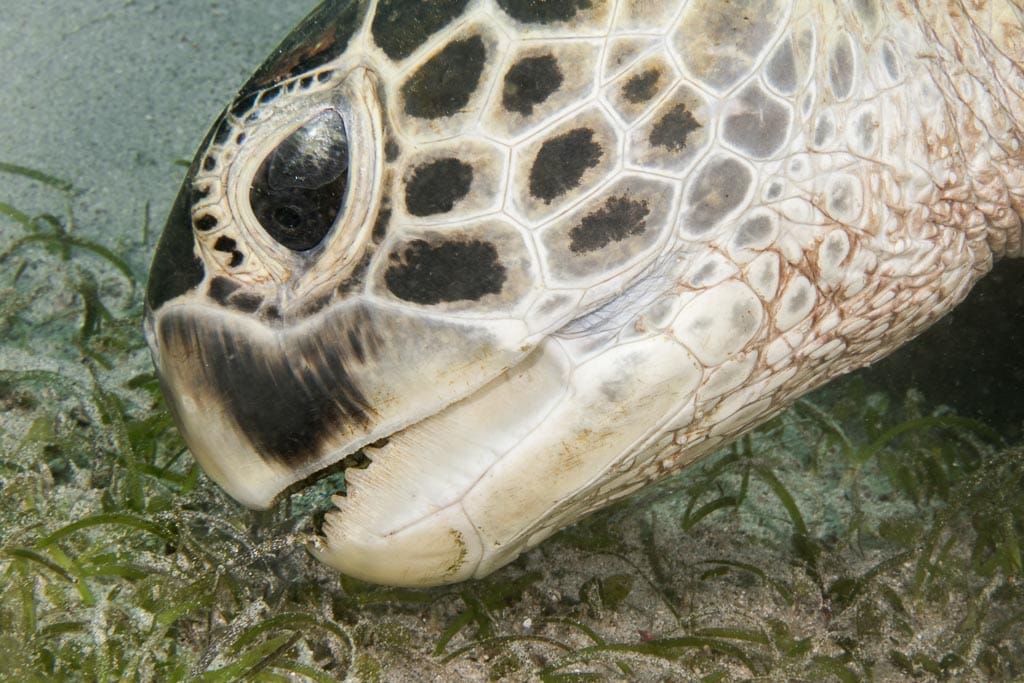
Reproduction And Life Cycle
In green sea turtles the age of sexual maturity ranges from 10 to 50 years old, a very wide range in the animal kingdom. Fertilization is internal with mating taking place both underwater and at the surface. When green turtles mate, two or more competing males often pursue the same female. Males routinely bite other mating males in an effort to force the mating male to leave the female, thus, giving the biter a chance to mate with the female. Sometime after mating, females crawl onto sandy beaches to lay their fertilized eggs. This typically happens at night around high tide during warmer times of the year. Females crawl well beyond the high tide line where they dig a hole in the sand known as a body pit. The body pit is usually slightly larger and deeper than the body of the female.
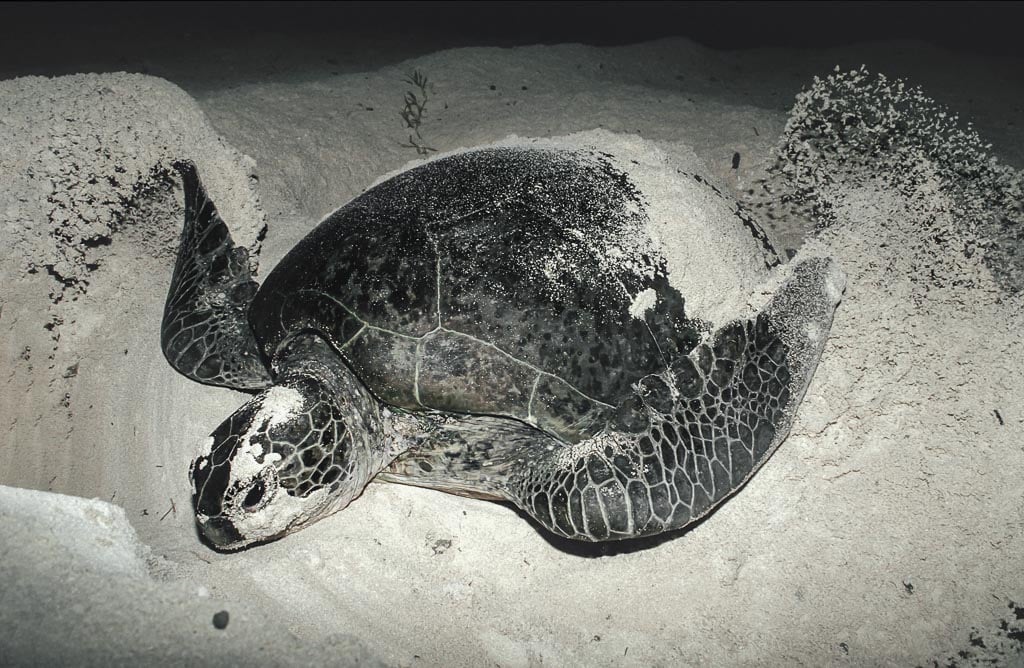
Toward the back of the body pit the female excavates a small depression called the egg cavity where she will soon deposit as many as 200 eggs. The round, white, soft-shelled eggs are slightly larger than those from chickens.
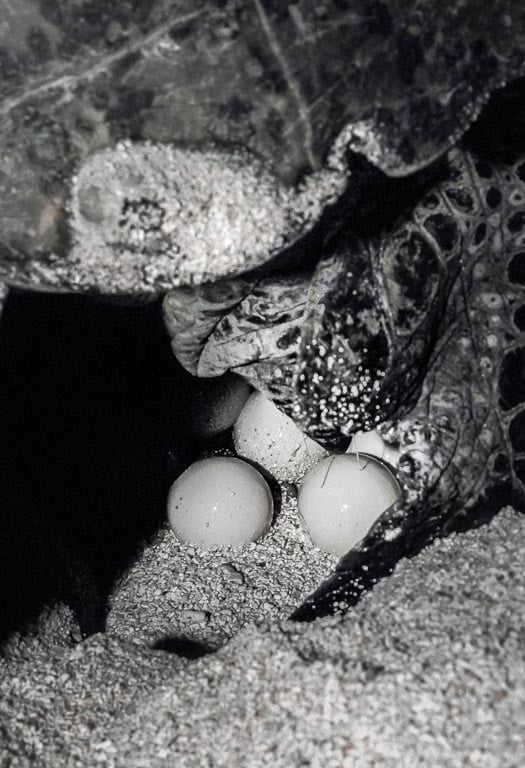
By laying their eggs above the high tide line, female green turtles ensures that future tides will not erode the nest and expose the incubating eggs. It takes the female several hours to deposit her eggs. When finished, the female covers her nest with sand and returns to the sea. A given female lays as many as nine clutches during a single mating season and mates every two to three years.
A fascinating aspect of sea turtle reproduction is that the sex of a hatchling is not determined at the time of fertilization. Instead, the temperature of the sand surrounding an egg during the incubation period is the determining factor. As a rule, the shallower an egg is in the nest, the warmer the surrounding sand. These eggs produce males. Eggs that are from the deeper, cooler part of nests yield females. Incubation time varies from 50 to 70 days.
Baby turtles use their temporary “egg tooth”, a protuberance on their beaks, to break the shell of the egg, and upon hatching the young instinctively head for the sea. Life can be most unkind to hatchlings as they are heavily preyed upon by ants, snakes, rodents, sharks, dolphins, bony fishes, birds, crabs, etc. It is estimated that only 10% of newborns live as long as one year, but those green turtles that survive the onslaught of their early life might live as long as 80 years.
